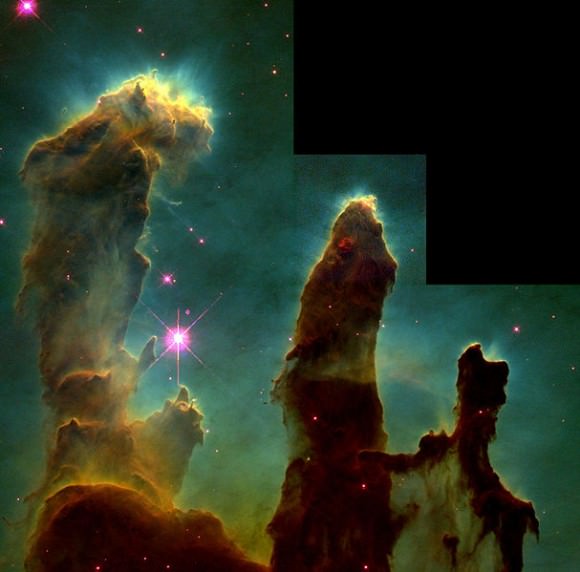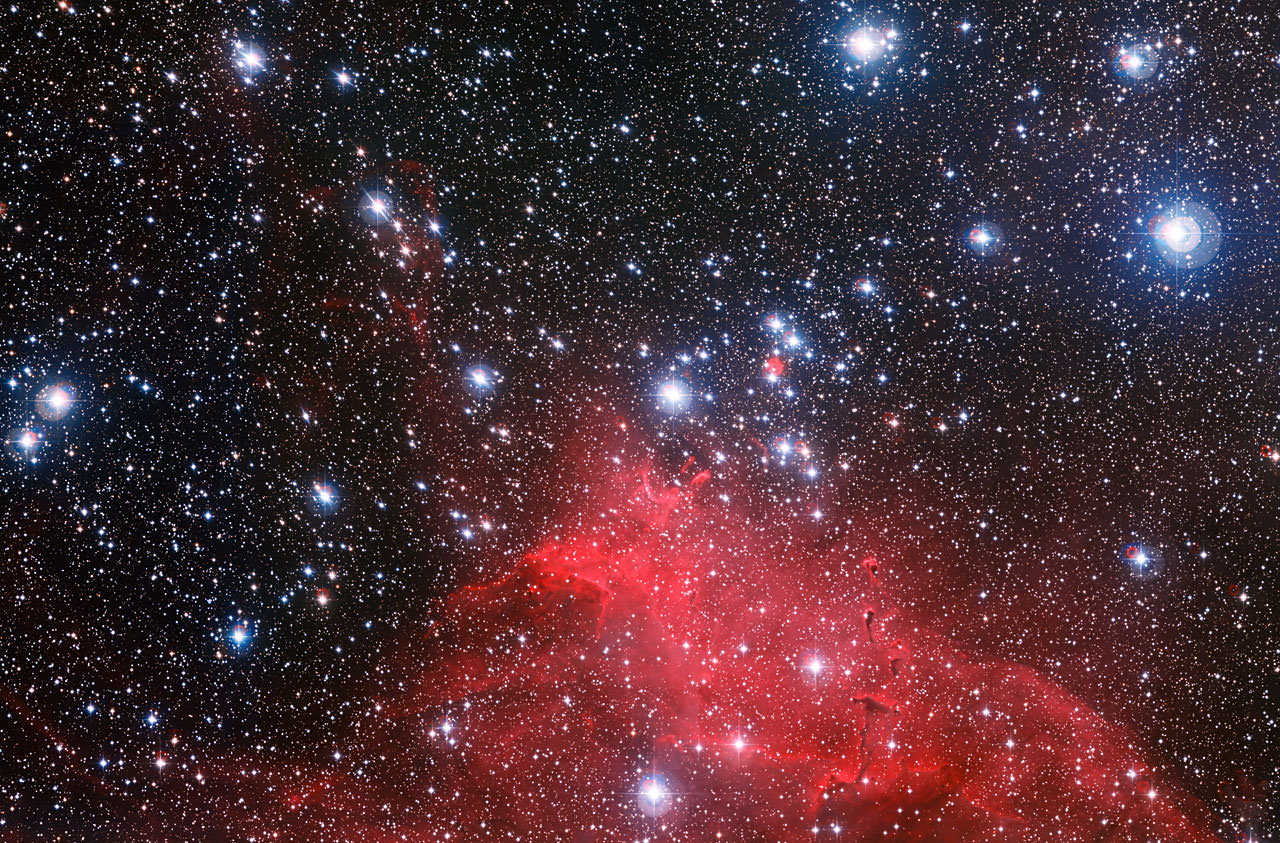Star winds are pushing the gas around NGC 3572 into “elephant trunks”, as you can see if you look carefully as this picture snapped by a La Silla Observatory telescope at the European Southern Observatory in Chile. It’s a demonstration of the power of the youngster blue-white stars embedded in the cloud, which are generating huge gusts blowing the gas and dust away from them.
It’s common for young stars to form in groups. After a few million years growing together, their respective gravities pushes everything further apart, and the stars then finish their lifetimes on their own. Looking at young star clusters such as this gives astronomers a better sense about how our own Sun began its life.
If we zoomed closer to those elephant trunks, they would look similar to the famous “Pillars of Creation” image captured in 1995 by the Hubble Space Telescope in the Eagle Nebula (M16). NASA also did a follow-up observation using infrared wavelengths in 2005 and 2011, which made the young stars a bit easier to see amid the gas and dust.

As for the picture of NGC 3572, the high-resolution image from the Wide Field Imager on the MPG/ESO 2.2-metre telescope is also revealing new mysteries that will require further investigation, ESO stated.
“A strange feature captured in this image is the tiny ring-like nebula located slightly above the centre of the image,” ESO wrote. “Astronomers still are a little uncertain about the origin of this curious feature. It is probably a dense leftover from the molecular cloud that formed the cluster, perhaps a bubble created around a very bright hot star. But some authors have considered that it may be some kind of oddly shaped planetary nebula — the remnants of a dying star.”
Astronomers were also surprised by seeing stars older than 10 million years old within this image that were still picking up mass, which implies that planetary formation could take longer than previously believed.
Research was led by ESO astronomer Giacomo Beccari.
Source: European Southern Observatory


That statement is ambiguous and incorrect, and it’s not what the source states.
The reason young stars in groups (open cluster) disperse over a few millions of years is that open clusters are inherently unstable: the radiation pressure from the hot, young stars pushes away the remaining dust and gas, reducing the collective mass of the star cluster and their mutual gravitional field; consequently, the escape velocity of the system is lowered below the average velocity of the constituent stars, allowing them to escape the system through gravitational interactions between member stars.
Sounds reasonable.. source please?
I’ve already provided a link to the reference — it’s underlined above.
My bad.. Also included, but not mentioned in your above paraphrasing from your ‘Wiki-Link’, is the statement: “…become disrupted by close encounters with other clusters and clouds
of gas as they orbit the galactic center, resulting in a migration to the main body of the galaxy as well as a loss of cluster members through internal close encounters.” So, along with your above statement, there are a number of other factors that cause the stars in open clusters to eventually disperse. So essentially, you are both correct, if not completely succinct.
Well, that’s why I provided a link – to back up my statement and also to provide additional information!
“A strange feature captured…” saw that and wondered after it. Thanks for including this statement.
“… their respective gravities pushes everything further apart, …” Pretty strange statement!
@Ivan3man, thanks for clarifying that.